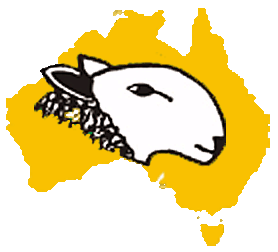
BORDER
AUSTRALIAN
LEICESTER


ABOUT US
The role of the Australian Border Leicester Association is to work with the states to promote all aspects of breeding, showing and selling of the Border Leicester Breed. This includes the coordination of press advertising across the whole country and the awarding of ribbons for the best presented pen of first cross ewes at leading sales; also representing breeders in discussions and dealings with all levels of government.
HISTORY
While the Border Leicesters' beginnings are very much British, its impact on the Australian sheep industry has been enormous.
Their origins can be directly traced back to the Dishley Leicester, made famous by the renowned British livestock breeder Robert Bakewell (1726-1795).
BORDERS TODAY
Today the Border Leicester can be found in just about all parts of Australia except the northern tropical regions. From high rainfall areas, to the wheat sheep country and into the drier pastoral regions, Border rams are being used to produce the quality first cross ewes that the prime lamb industry needs. We are also seeing the appearance of first cross ewes in what was once traditional Merino country due to the decline in the wool market.
ASSOCIATION NEWS
The Associations AGM is held in November at Horsham in conjunction with the annual ram show and sale. For more information about the Border Leicester breed or the ABLA you can contact any member of our committee.
COMMERCIAL ASPECTS
The Border Leicester breed has long established itself as the premier maternal breed in the country. When mated to Merino ewes the daughters of this cross are excellent prime lamb mothers. They are renowned for their good mothering ability, excellent milk production and high lambing percentages. When mated to terminal sires these ewes produce quality lambs for both the export and domestic markets.
Over the years there have been many trials run to find out the best ewes to use in prime lamb production. While Border Merino ewes have always performed well in these trials it is out on farms that her ability to produce large numbers of quality prime lambs over a wide range of climatic conditions that has made her number one.
